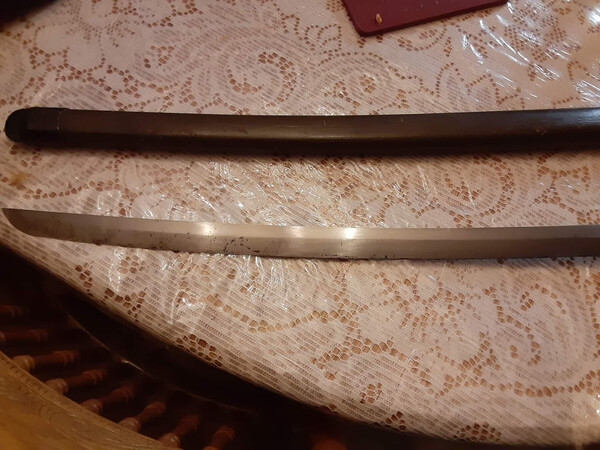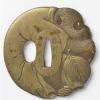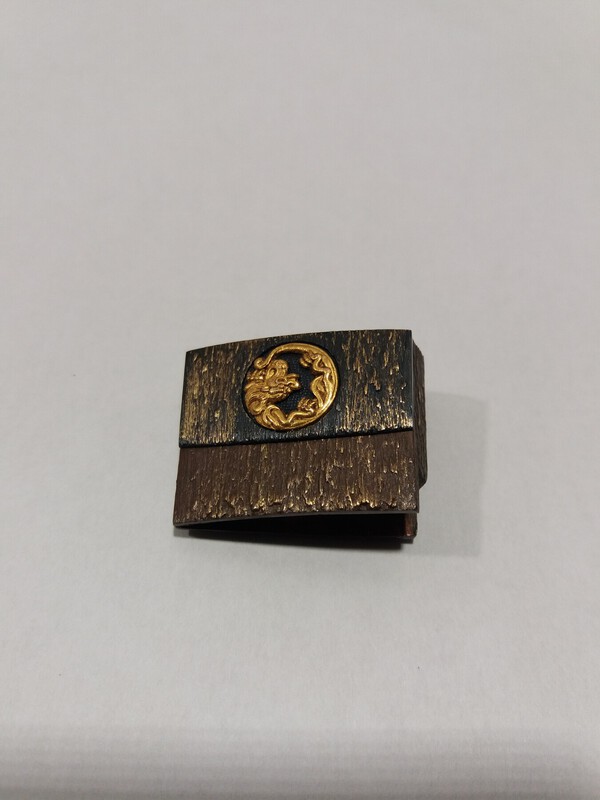Leaderboard
Popular Content
Showing content with the highest reputation on 08/28/2021 in all areas
-
Geoff, you made a very important point, once you start on the Gunto journey, your goals certainly evolve with time. After starting out with a couple of Gunto, I decided to learn more, and purchased the fantastic publication by DAWSON. My goal was then to collect every WW2 variation in Dawson's book, NCO, 94, 98, Late war RS , and KAI Gunto. As well as the tassels and sword belts and hangers. I achieved this, and along the way, found examples Dawson hadn't documented. To get to that goal, it took the space of a whole room, and it goes without saying, a bucket load of $$$$! A turning point was meeting a local collector that specialized in Gendai-to. It then became "all about the blade". This was further emphasized when I accompanied him to the DTI held in Japan. Whilst there I found a SADAKATSU with AYASUGI Hada made in 1933, polished with Tokubetsu Hozon papers. I was converted to collecting good Gendai smiths. So many collectors around the world have benefitted from my selling off a large part of what I had accumulated. So the journey was not wasted by any means. I learned a lot, have made and kept many friends, and importantly sold off swords at basically what I paid for them. So I hope the swords I disposed of, help a new generation of enthusiasts, that in itself is worthwhile. So at some time there comes a "life changing moment", like my SADAKATSU, that speaks to you and says, "this is the new direction I want to go".7 points
-
Ahhhh goals....what do I like? WW2 mounted blades, historical authenticity, provenance (hard to find) and a wild hamon and for me, the exquisite top shelf of hamons is Mt Fuji with, a sun! Thats my holy grail and thanks to Brian for the attached picture from his 2016 post 👍. But it didn't start that way. 2016 I went to the military museum in Darwin NT and was taken by a real gunto (98) in a display cabinet...awesome. One year later came across another one at the markets .... Koshirae in poor condition ...it had a blade of some description with scratchy writing but they wanted too much US $450 and I was with my wife 🤔 ( it could have been anything...including great!). But the collector hook had been set. So with interest at a high, I read and researched the internet and decided, on good advice, that I shouldn't waste money on a few cheap guntos but instead, just buy something of value first up. So with logic rather than heart I bought a beautiful Koto Uchigatana (influence Soshu/Chikuzen school) in nice 98 mounts, mumei from the UK (John Carlin/Bill Tagg). I wont sell it! Ok been there done that....it was then that I developed a real (maybe my original?) liking for 95's and some leather tassels. Having been one, like my dad, the NCO's will always have a special place with me. Gathered a modest collection of each variety and I'm very happy with that ✔). Then discovered 98's and bought my first (blind) on Aus. Ebay for a very modest price and it turned out to be a Teruhide with surrender tag and provenance (tsuka not off since 1945 ....I know, I know....but really, that is true). This is a good start to collecting....yes? Started buying real books, listening to people and adding some beautiful swords to my small collection. A greater interest in gendaito is developing but unfortunately and honestly, I have found that the more I think I know, the greater risk I expose myself to (no one from NMB 😊). For me, a little knowledge can be dangerous so self control and thought are things I need to keep handy in my pocket. 95's were so much easier. Collecting goals? - Like others, my collecting goals have definately evolved. If I stopped now, I would be very happy. I haven't sold any of my swords and, at this time, have no intention or desire to buy anything else but I guarantee something will come up. In the mean time I have started documenting each sword and that is an interesting and very educational task in itself. Happy collecting. Rob6 points
-
6 points
-
Thanks for some better photo's JR after your last post. This is the 6th distinctive pattern of the type 95 model. As Thomas said made by the Jinsen Arsenal, not Nagoya, and i agree with him that the stampings are correct. It differs to the previous pattern by having the serial numbers in the 300k range, instead of the 200k range. The knurled/ cross hatch handle is also more bulkier than before, with more finer knurling . With this pattern, it is the first time we get to see the wooden scabbard which was the replacement for the metal ones. You will not find any serial numbers on the scabbard, for some reason this practice was discontinued with this model, so only on the blade itself. The next two patterns only had the arsenal inspection stamps and NO serial numbers on the blade, as well as the scabbard. Looking at yours, it does appear to be a bit messy, however over-stamping was common on these, especially with the first digit, 3 over the 1. If you get a chance and get a good look, you should find more inspection stamps on both the scabbard and sword fittings. (ヘ) and maybe get a nice sharp picture of the serial number itself. As Rob and Bruce also mentioned, there is not much to see under the handle if you remove it, and there is a good chance it may not go back together nice and tight again, i personally would leave it alone, especially since it appears to be a family heirloom of yours. You will never get these 'papered' as they are all machine made, not traditional, so 'nihonto' experts will not be able to tell you much more.4 points
-
Self, J and Hirose, N: Japanese Art Signatures. Bamboo Publishing Ltd., London, 1987. This little book seems not to be very well known, but it's my go-to for translating mei. It doesn't deal with stroke count, instead teaches image-recognition based on radicals, and is focused specifically and exclusively on signatures, so it deals with a (somewhat) restricted range of kanji. In addition to the actual artnames, it has very helpful sections on how to analyze a signature, and on how to read numbers, dates, places, ages, family/clan names, and titles. Most of the content is relevant to swords, though it does pay attention also to metal workers, lacquer artists, and netsuke carvers. It was OOP for a long time, and hard to find, but it was reprinted in softcover in 2006. Not dirt cheap, but recommended if, like me, you are image-oriented and mainly want to learn about reading signatures. https://www.amazon.com/Japanese-Art-Signatures-Handbook-Practical/dp/18916400974 points
-
Another theory is to buy whatever you like early on then once you know what you exactly want it's easy to sell off what doesn't match.3 points
-
Goto Shunjo (1740-1822) was the grandfather of the great Goto Ichijo. The lineage here begins with Goto Kenjo (1586-1663), the seventh mainline Shirobei master. This kogai is excellent in both its execution and condition, featuring fine, even nanako as a background for the long-earred rabbit motif. The eyes of the rabbit are inlaid in gold. There is very little wear evident. The overall presentation of this kogai is very pleasing, with the smooth contours of the form of the rabbit juxtaposed against the crisp, clear nanako work. The kogai is signed on the reverse, Goto Shunjo. Measurements are 21.1cm x 1.2cm. Circa late-18th century. Boxed. A very fine shakudo kogai. $850.00, plus shipping. CORRECTION! A fellow member with much more knowledge than I on the Goto lineage of fittings makers has corrected me with regards to the identity of the Goto smith who made this kogai. It seems there were two Goto Shunjo smiths, one who was also known as Mitsunaga (1634-1712). This is the actual maker of this kogai. He dates to roughly a century earlier than the later Goto Shunjo (Mitsukazu) who was Goto Ichijo's grandfather. So, the proper dating of this kogai is actually likely to be the latter part of the 17th century. Below please find an image of the chart detailing the lineage. Sorry for the error! And many thanks to the member who PM'd me with the correction! Steve2 points
-
2 points
-
Michael, Do you mean to delete them from this NMB thread? If so, please reconsider. In researching various smiths and gunto types, I have come across a number of threads where this was done and it's quite frustrating. Sometimes the deleted image was something I specifically needed for the issue at hand, but it's now gone forever. New guys also learn much from these discussions, but without the images, the discussions become almost worthless. They are your property, so I respect your right to do so, and maybe there's a good reason. Sure would hate to loose them though.2 points
-
Hi Geoff, The safest thing to say is that your collecting goals will evolve in line with your taste and that this tends to be a function of increased knowledge and experience. If you can focus on getting an idea of what amounts to good quality items in whatever area you start off in and pursue purchases accordingly, you'll lose little money and hopefully make a profit if you decide to sell them and move into a different line. Patience and self-restraint are useful qualities if, like most people, funds are not unlimited as it's easy to buy a number of average items rather than a couple of good quality pieces. At the moment I have a bunch of stuff that I feel I've outgrown; the thing that is stopping me from selling these items is knowing where to put the money next, so I'm trying to be patient.2 points
-
Hey Trystan, here pic's of Nakago. The Typ98 Koshirae is not a repro. All fittings with the number 29 and Kabutogane has a Sakura Mon. Yes, it is very likely that it is the original Lt. Colonel's koshirae. Ingenious Volker, that is very special! I have been trying to get in contact (email-address) with Fujino Masatsugu Sensei, but no success. -.-2 points
-
Just to further round out: Nōshū is an area in the middle of Japan, which corresponds to present-day Gifu Prefecture. "Nōshū" is the old, traditional name of that region (used when Japan was organized under the feudal government). This area was always famous for sword production, and it still produces high-end edged tools (knives and such). It was, and still is, quite common for smiths to continue using the traditional names of the prefectures. There is a ton of information regarding gunto (army swords) on this site. Another site you might have already checked out is http://ohmura-study.net/900.html https://en.wikipedia.org/wiki/Gifu_Prefecture2 points
-
J R, Nothing to be gained by removing the tsuka (handle), usually nothing at all on the tang. You will not find any mei or swordsmith's signature. BUT be aware that if you do remove it, you run the risk of breaking screws and generally just not being able to get it back together to fit as tightly as it does now! I have a real softspot for the last of the Type 95's but they are machine made blades usually of low quality steel (not traditionally made). So in terms of skill or art, there is never anything special about the blade itself. That would be the worst struck serial number I have ever seen (maybe its the bad picture) and it would worry me a little. Is there any corresponding number on the throat of the saya (scabbard) ? Picture of mine attached. Rob2 points
-
I wouldn't be in a rush to polish it. I would have someone more knowledgeable look at it first. Polishing is a bit of a commitment both in terms of money and time, so you would want to be fairly certain that: a) the signature isn't a forgery, and b) there aren't any problems with the sword that would only worsen (or be further revealed) by a polishing. Sometimes these things are unavoidable, and you can't tell if there are any flaws until you get it polished. But by having an expert look at it close up you might get some confidence that the few thousand dollars you are about to spend on a polish will be money well spent. And yes, some people do get swords polished even though it may not be a financially wise move. But keep your powder dry for now. The smith (or, this group, I should say) is a well-known group, and they made good, distinctive swords. Hopefully you can get some good advice. (Better close-up pictures of the tip and the "machi" area might help others chime in as well).2 points
-
2 points
-
Hi Steve, Noshu Masuda Kanetaka Saku (made by Masuda Kanetaka of Noshu). The paint is the number 388. Grey2 points
-
Michael, Yeah... that one (especially with crusty rust like that in what would be considered wear areas) is just kind of neglected. I think the Japanese really were into wabi shabby for quite a while (a lot of earlier goto work was apparently "pre worn" to have this look, etc), but I don't think your piece is that. - here's one that was just used a lot: This piece is probably right on the border of having too many losses, but its interesting to me because it was used quite a bit and appears to have always been cared for. Note also that sometimes on pieces there's this stuff called sukirushi that can start looking pretty bad/like corrosion, but it isn't. I think it was some kind of lacquer clear(??) coat that seemed to have been popular for a while (you see it on several different types of tsuba and actually other artifacts of a certain age or older) that didn't age well: Oh, and here's an onin covered with that gunk as well: Best, rkg (Richard George)2 points
-
Hello, I have this beautiful sword which was made around 1988 by Masatsugu (政丞), real name is Fujino Yoshisaburo (藤野芳三郎). He is one of the fifth students of the famous swordsmiths Sakai Ikkansai Shigemasa (酒井一貫斎繁政). It is a "Memorial sword" and has the following Mei (thanks and greetings to SteveM): 知知夫住藤野政丞作 応桜井三郎造之 為旧近衛連隊陸軍中佐 桜井冨治十三回忌供養造之 明治十九年一月二十三日仙台生八十九才武州川越没 The sword is by Fujino Masatsugu from Chichibu city in Saitama Prefecture. It was made at the request of Sakurai Saburō, on the ocassion of the 13th anniversary of the passing of his relative Sakurai Tomiharu, who was at one time a Lieutenant in the Japanese Imperial Army. Tomiharu was born in Sendai city on January 23rd, Meiji 19 (1886), and died at the age of 89 (1975) in Kawagoe city. On the Gunto Kabutogane and Habaki is a Sakura Mon. So this fits great with the Sakurai Family. I see such a sword for the first time. Have any of you ever seen a modern sword put into a Gunto Koshirae as a memorial sword? Thank you for your opinion. Peter1 point
-
I'm new to the hobby and I've become curious about the topic of Collecting Goals. At first my goal was simply to have a few swords that represented the common designs of Gunto (Type 98, Type 97, RS, Type 95). After months of being involved in the hobby, and now better educated (from my readings, to being educated by NMB members, and from learning from my mentor and Koshirae repair guys), my collecting goals are beginning to evolve. I'm interested in the collecting goals of my fellow collectors. What were your past goals? How did your goals evolve? What are your goals for your collection, currently?1 point
-
I just purchased a WW2 Japanese Army Type 98 Officer Samurai sword and would like to ask the experts out there for a translation of the tang. I was told it has the sword maker signature of Kanetaka. I’d really like to know exactly what the translation of the characters on the tang. This is my first samurai sword and would really like the exact translation. I appreciate all the help you can give me. Respectfully, Steve S. Aka Bubba 0071 point
-
1 point
-
Thank you for bringing this to our attention. Oddly enough, I am seeing this kanji character arrangement as follows. The top row kanji characters 1 & 2 (村田) are reading from left to right with the right side of character 1 on top of character 2. The bottom row kanji characters 3 & 4 (経芳) are reading from right to left. See below for a graphic depiction. Beside myself, does anyone else see this arrangement of characters? 12 村田 43 芳経 @BANGBANGSAN1 point
-
1 point
-
This has been a challenging - BUT very interesting thread. I think the blade will also prove to be interesting. In 200 years that may be the kind of blade that is shown to open a new historic era. Peter1 point
-
1 point
-
I saw Nick's comments regarding the stamps on the other site. The four characters of the name Murata Tsuneyoshi (村田経芳) are combined into a two character motif. So the components of the kanji for Murata (村+田) are combined into one character, and the components of Tsuneyoshi (経+芳) are combined to form another character. From Ohmura's site 村田経芳の四字を篆書して、二字に合成した刻印を打った http://ohmura-study.net/203.html1 point
-
I've really enjoyed the posts here! This is my first year collecting and my initial goal was to have a range of gunto that represented the various types (Type 95's, Type 98, Rinji Seishiki, Type 97). I've nearly achieved that - still don't have a side-latch version Type 95, or the very last variation of the 3rd version "Pineapple sword", or a Type 94. Ironically, I viewed the elusive Type 94 up for bid on invaluable this morning - see attached photo (too bad I'm not in a position to bid, currently). And, strangely enough, I find myself drawn to the Type 97 Kai Guntos - something about the Koshirae. So, I think my current goals are similar to Bruce's initial goals, however, after meeting with my mentor and having my mindset changed, I am now more focused on quality rather than quantity, so I'm moving in that direction (as others have mentioned here with being more focused on the quality of the blade). And, finally (this seems to contradict my previous statement), though I am now more concerned with blade quality and the smith, there is also something about a gunto with damaged/worn Koshirae that peeks my interest. And I believe that's the case because I now know restoration experts who can repair and restore Koshirae, and I really enjoy seeing Tsukas and Sayas restored on formerly damaged swords. Having said that, I don't want to deal with a rusty old scratched, dinged, and pitted blade - the blade has to be in decent shape.1 point
-
1 point
-
As far as I know, there are no other numbers, Arabic or otherwise, stamped on the nakago.1 point
-
Modern and/or repro. The kuwagata and kuwagata dai are all in one piece and even then not fully formed. Even Meiji versions would have the kuwagata as separate pieces to be inserted into the kuwagata dai. This seems to have been stamped from a mold.1 point
-
My path took an unexpected turn. Like Neil, I only wanted a fair representative of the official Types. I got there, and wondered "Now what?" As time went by I developed an interest in the stamps on blades and got into collecting stamps! Ha! That's mostly complete (though never will end) and my thirst for detective work has chased other paths like RJT numbering. Just didn't see that coming, early on.1 point
-
1 point
-
I have a lot of stuff but dont want to sell something. Now i dont want to buy new because i had a lot of stuff. Dilemma.1 point
-
It is good to have large long term goals and smaller goals. Writing up a specific list of swords you want helps clarify and keep you on track. If it isn't on the list it better be something special.1 point
-
That is most unusual, perhaps the Koshirae is the Lt. Colonel's original Type 98?1 point
-
By removing the tsuka, you run a 50/50 chance, like Rob mentioned, that the tusba/seppa will be a bit loose after re-assembly. Don't know why, but it's a well known issue for the 95s.1 point
-
JR, My message crossed over with Bruce's and he has a lot more experience than me but I suppose it comes down to personal choice. For me, I dont remove the handles from 95's ......a conservation/preservation thing.... although have to admit I did it once with a second stage 95. If the numbers on the sword and saya match then that is a very good thing. Rob1 point
-
Thank you K. Morita for the information and characters since they are hard to see on the sword and told never try to clean it up. Any information you may have on the sword maker, the place it was made and what the number 388 means would be great to know. I’m trying to learn everything I can about the sword. Again, thank you for your help. Respectfully, Steve1 point
-
To get you started on Type 95s, start with the link below. IJA Type 95 NCO Sword Info And if this is not enough, and you plan on staying up all night, then try this. Short Development History of Type 95 Gunto1 point
-
Mywei, SteveM, thank you both. From browsing the forum it looks like next year’s Chicago show may be my best next step since I live just outside Chicago. Would it be better to have it polished (and yes thank you I’ll definitely take the existing advice on finding a polisher) before the show or after? If the consensus at the show was that it was NOT genuine then it would save me the cost of polishing; but from my browse of the forum so far it looks like polishing may help in that decision. Mywei I also see discussion about Osaka vs Kyoto shinto and the characters do fit Osaka better based on my nearly 20 minutes now of expertise in the matter so thanks for the pointer there and I’ll have to search more on that too.1 point
-
Cross-References to the same sword. Meiji date help and Help with Mei and Tensho Script1 point
-
I'm personally into that combination of age and personality with swords. I also LOVE a beautiful type 94/98 gunto mounted ancestral blade. I wanted a Mantetsu because it seems the most recent and last militarily/war used Japanese engineering attempt to improve the sword. I prefer 26" and above nagasa. Didn't want a wakizashi originally but now have 3 (still not that into them). Didn't want a yari but now I have one...those make you want a naginata...the classic rabbit hole. I love non-traditional themes in fittings preferably attached to myth/stories/artistic themes. I've found I also love different bohi styles on blades and love the different ways to accent/decorate a blade. I still need an o-kissaki blade (preferably with naginata-hi) and will always be tempted by a blade with a red laquer bohi...always. Beyond that I really haven't gotten into a strong desire to focus on specific smiths/schools or even hamon styles as I find something to love in each. Prefer early edo and older. Would also love a daisho with personality and will always keep my collection at 20 or less swords. If I ever get to 20 I have to sell one to buy one.1 point
-
Gary - We have members who make the trip up from Monterey each month, I will let them know of your interest. You should consider joining the NCJSC, we are currently in the middle of a membership drive - you can get the next four issues of our newsletter and all of next year for the price of one year. We just started a monthly shijo kantei in the newsletter and if you're a member you can participate in our online Zoom kantei which happens each month. Membership (ncjsc.org) -tch1 point
-
1 point
-
1 point
-
Item No. 101 - Iron Tsuba with brass and gold 6.17 cm x 5.61 cm x 0.45 cm Tanto sized tsuba with subject of Heron and water margins , signed with inlaid kao Unusually shaped tsuba for a small blade - any help or suggestions with the age, signature and kao would be appreciated. Item No. 102 - Iron Sukashi Tsuba 7.43 cm x 7.30 cm x 0.62 cm Subject of Plum tree - attributed as Akasaka Ume no ki Nice , heavy iron tsuba with fully rounded mimi , shakudo plug , 18th cent ?1 point
-
1 point
-
I think the paper is from Hon'ami Kōryō. The Hon'ami family are a long line of sword scholars (and sometimes sword polishers) who used to be the official sword appraisers and polishers for the shogun and the imperial family. Kōryō is a relatively recent person, active in the early 20th century. I don't think there is any concensus on how accurate his appraisals are. The whole paper says 在銘 時代寛文 勢州石見守国助 長サ壱尺四寸九分余 正真 It means Sword with name inscribed. From Kanbun era (c. 1660s). "Seishū Iwami-no-kami Kunisuke" Length of 1 shaku, 4 sun, 9 bu (should be about 17.77 inches) Genuine The long name inscription just means, "Kunisuke, Lord of Iwami in Ise Prefecture" made this.1 point
-
Dear George. To take this back to the original thread if I may, your seller, whom I don't know and as far as I remember have never dealt with, has very magnanimously stated that he will take the sword back so that remains your option but there are some things to think about going forward. It is not my intention to criticise anybody or to stir up anything but here are some thoughts. Major UK auction houses refuse to allow their normal conditions of sale to apply to Japanese swords; they recognise that they don't have the expertise to guarantee what they say. In other words if you buy a sword they have described as Koto and Japanese shinsa ascribes it to Shinto you have no come back. If you turned up and said that a few people on an internet forum had said that it was Shinto I suspect you would be met with polite disbelief. You asked for some opinions and you got them. When I posted earlier I did not come off the fence but offered some thought for study, however I think we are all far too quick to run to, 'it tapers and it's straight it must be Kanbun Shinto'. For what it's worth, which is as little as every other opinion presented here, I think your sword is Koto. You bought the sword from Ebay if I understand the thread correctly. There is a whole heap of advice on this board about not doing that but going for polished and papered blades from known sellers and that has much to recommend it but the lure of discovery is too great and tales of treasures out of the woodwork keep us all going. However this means that you had time to look at the sword, out of polish though it is and in photographs whose quality I don't know. You took a flier and as I suggested I can see why you might. But that's the point, you took a risk. Good for you! A lot of the fun to be had is taking that risk when you think you see something worth pursuing and getting the result you want when it does turn out to be an early Kamakura blade and goes Juyo. Your money, (not a great deal of it but believe me I appreciate how hard that can be to come by sometimes), your risk. The only way you will ever know if this paid off is by sending it for polish and shinsa. Worst case scenario, I am completely off my trolley and you have a papered, suriage Kanbun Shinto sword. If that happens then you will probably not break even if you sell it straight away, or maybe not even if you keep it for thirty years. But that's not how a gamble works is it? What if it does turn out to be Kamakura but with a fatal flaw? Then you've lost everything. Expecting every gamble to pay off is also a completely unreasonable way to enjoy a hobby, a vast number of people seem to enjoy rambling all over a bit of country whacking a very small ball with a metal stick, they pay thousands of dollars/pounds/currency of choice to do so. Very few of them make any money out of it. They spend a ton of money on something they enjoy, they don't anticipate a monetary return. (If my wife is reading this then, don't worry Darling, of course my collection is different and when I die you will be able to sell it for much more than I ever paid for them!) If you go the polish and shinsa route and it turns out poorly then at the very least you have rescued an historical artefact. Is that not something you would enjoy? Whatever happens to my small collection I have had such a great time collecting and learning, sharing with others, and it's been cheaper than golf! Sorry! Ramble over. Of course it's your sword, your deal and your choice. All the best.1 point
-
1 point

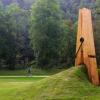








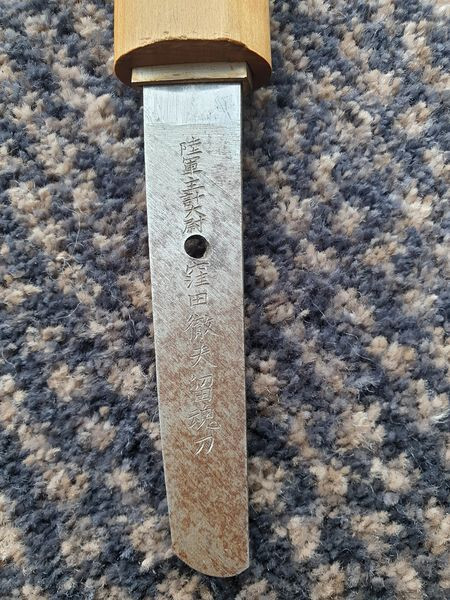

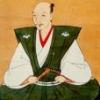













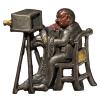
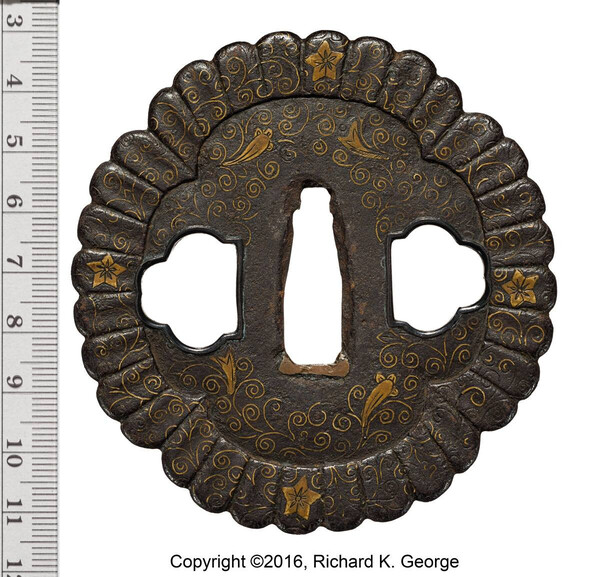



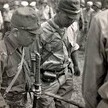







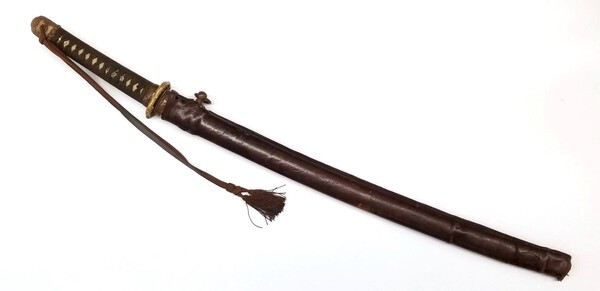







.thumb.jpg.bc10b59027a00aa142dce0349f3ba9e0.jpg)

